It's all about the classical music composers and their works from the last 400 years and much more about music. Hier erfahren Sie alles über die klassischen Komponisten und ihre Meisterwerke der letzten vierhundert Jahre und vieles mehr über Klassische Musik.
Total Pageviews
Saturday, August 20, 2022
James Last - Abide With Me
The Stage Manager- A Musician’s Best Friend
by Janet Horvath, Interlude
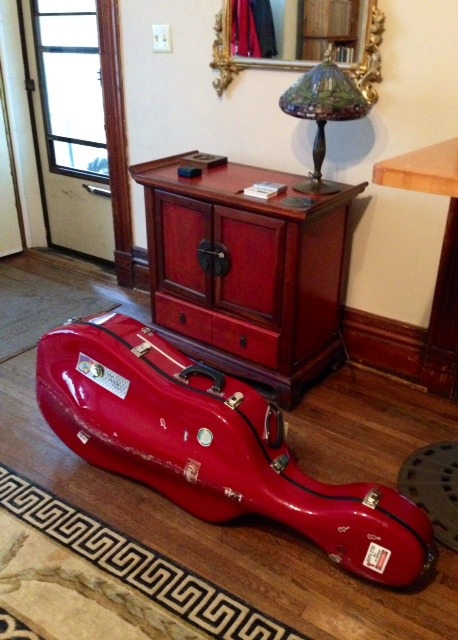
Cello
Stage managers of orchestras have a very important role. A good one takes expert care of our instruments and the musicians, soloists and conductors— meeting their every wish and whim. The stage manager is the one who announces, “Orchestra… On stage please. Orchestra on stage.” They’re the ones that proffer a towel to a sweating conductor and indicate to the soloists how to maneuver through the string section to get to center stage. They’re the ones who set up the stage and who know exactly the instrumentation for every piece. Different set-ups often occur in one program.
Not the least of their duties is packing up all the instruments and equipment when the orchestra is on tour— a huge job. Our stage manager, Tim Eickholt, now retired, was someone we trusted implicitly with our instruments. From a family of stagehands, he has an impeccable background as a master designer and builder and he had lots of experience with showbiz. He understood that musicians often hastily exit after performances to get some food and a beer. Tim was so conscientious that after concerts, especially on tour, he would check backstage for any belongings that might have been left behind. He’d find items of clothing like cummerbunds, shoes, belts or socks and worse— instruments, even unpacked. Once I woke up in the middle of the night in a panic, realizing that I had left my cello backstage! Fortunately, it was a local concert and Tim took my cello home with him.
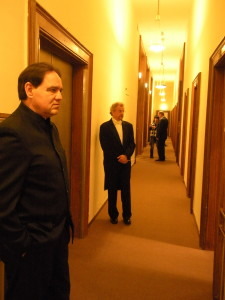
Tim at the ready at the Musikverien Vienna
One concert night the temperature dipped well below zero, as happens often in Minnesota. My warmest down coat was in for repairs. I borrowed my mother’s full-length mink coat to get to Orchestra Hall for that evening’s performance. I lugged the cello outside and into my car, which sputtered in protest when I tried to start it. On the highway my car lit up like a Christmas tree. Everything flashed. Then the car went dead. Somehow I got the car onto the shoulder.
Stranded. For a few moments I sat dumbfounded wondering what I was going to do. I couldn’t be late for the concert! But more important, I knew I couldn’t walk in this frigid weather carrying the cello. With trepidation I left the cello. I started running, in my full-length black mink coat, along the shoulder of the highway towards the nearest exit. A car pulled up and a man said, “Get in. It’s much too cold outside.” So I did, more worried about the cello than for my own safety. The driver took me to the Orchestra Hall. I literally flew down the stairs directly to our stage manager’s office. In tears I told Tim that I had left my cello on the highway. We made a hasty exit and jumped into Tim’s car to find where I left my car, despite the fact that it was almost 8:00 p.m. There was no time to lose. The tow truck had already pulled up beside my car to take it away. Believe it or not we made it back in time for the concert.
There are endless stories of the idiosyncratic behaviors of soloists and conductors. Some artists demand peculiar foods to be brought in backstage. Others need their outfits pressed, fresh towels delivered, ice buckets with drinks, even stationary bikes (as in the case of Christian Tetzlaff) or personal chefs (as in the case of Vladimir Horowitz) and every soloist was personally escorted to the wings of the stage. Tim, always respectful, handled it all.
I remember when renowned violinist Henryk Szeryng came to play the Beethoven Violin Concerto—impeccably, I might add. During the rehearsal he found the stage much too bright. Over and over he said, “The lights, the lights…” Tim turned the lights down and down until the musicians on the periphery of the stage couldn’t see their music. Post haste, Tim had stand lights for all the bass players affixed to their stands.
Ottorino Respighi: Pini di Roma (Pines of Rome), P. 14 – II. Pini presso una catacomba (Pines Near a Catacomb) (Philadelphia Orchestra; Eugene Ormandy, cond.)
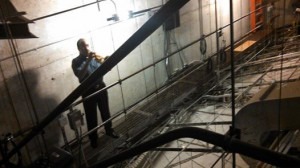
Manny at the top of the catwalk rehearsing the Pines of Rome
Other soloists need the heat turned up perhaps due to revealing dresses as well as trying to keep fingers warm. Tim would be the guy to take care of it. And when an offstage musician was required, he’d make sure everyone was set up in the audience balconies or stairwells backstage. Unless, as was the case recently with Ottorino Respighi’s Pines of Rome, for the spooky ancient catacombs movement the solo trumpet, Manny Laureano, was requested to play from the fourth level—a system of catwalks about one-hundred feet above the stage. Manny had to race up the narrow flight of stairs to dizzying heights, where there is no room for even a music stand, just a TV monitor hooked up so could get his cue.
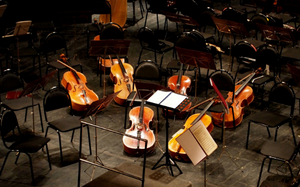 Tim relates that as a very young man he was one of the stagehands at Northrop Auditorium for a new production of a Mozart opera when the Metropolitan Opera still came annually to Minneapolis. Tim was asked to hang enormous, brilliantly painted murals, which he had to install in the middle of the night. Little did he know that these were the very Chagall paintings that now hang at the Metropolitan Opera House in New York, which one can see through the windows as you approach the hall. He had no idea what he had in his hands.
Tim relates that as a very young man he was one of the stagehands at Northrop Auditorium for a new production of a Mozart opera when the Metropolitan Opera still came annually to Minneapolis. Tim was asked to hang enormous, brilliantly painted murals, which he had to install in the middle of the night. Little did he know that these were the very Chagall paintings that now hang at the Metropolitan Opera House in New York, which one can see through the windows as you approach the hall. He had no idea what he had in his hands.
Tim never failed to sit in the audience during rehearsals or concerts whenever he could. He always has perceptive opinion about the pieces being performed. And did I tell you that he’s a decorated Vietnam War veteran with a great ear and passion for classical music and the musicians? He especially loves Shostakovich.
Friday, August 19, 2022
THE ROSE / SOMEWHERE IN TIME - Roger Williams
Mozart Piano Concerto No 9 E flat major K 271 Jeunehomme Maria / his music and his life
Wolfgang Amadeus Mozart (1756–1791)
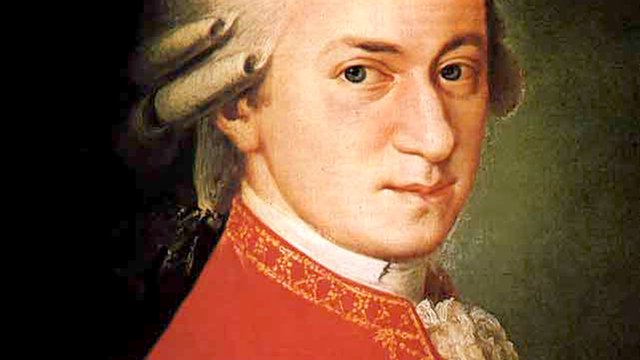
Biography
Mozart was born in Salzburg, in 1756. Mozart's father, Leopold, was an ambitious composer and violinist.
Though he was and still is considered a genius, he was also tactless, arrogant and had a scatological sense of humour.
Mozart composed his first opera, Apollo et Hyacinthus when he was only 11. A year later the Emperor Joseph II commissioned him to write La finta semplice.
In August 1782 he married Constanze Weber. The Mozarts' marriage seemed to be a happy one. Constanze was easy-going, free-spending and usually pregnant. Only two of their six children survived.
Post-marriage, some of Mozart's best started to appear -the Haffner and Linz symphonies and five string quartets, for example.
Between 1784 and 1786, he composed nine piano concertos and three of these concurrently with The Marriage of Figaro.
The year 1787 saw the premiere of Mozart's second opera, Don Giovanni.
Mozart had a great run of successes in his final years - Eine Kleine Nachtmusik and the Clarinet Quintet in A, three of his 41 symphonies; Cosí fan Tutte, three piano trios, the Coronation piano concerto, two piano sonatas and three string quartets.
His health began to fail and his work rate slowed in 1790. He got better, though, and in 1791 alone composed the most famous The Magic Flute, the Requiem (unfinished), and the Clarinet Concerto.
Mozart did not live long enough to complete his Requiem. He died in Vienna, in 1791, before his 36th birthday.
Thursday, August 18, 2022
Dmitri Shostakovich - his music and his life
Wednesday, August 17, 2022
Braveheart Theme (For the love of a Princess)
Braveheart Theme (For the love of a Princess)
TITANIC- Joslin - My Heart Will Go On (Cover)
TITANIC- Joslin - My Heart Will Go On (Cover)
Davao City composer explains what is popular Kadayawan song ‘Bahaghari Tayo’ all about
by Keith Bacongco, Manila Bulletin
DAVAO CITY – For almost 20 years, the iconic song “Bahaghari Tayo” composed by local music legend Popong Landero is always associated with the annual Kadayawan Festival every August.
Aside from Davaoeños, this festive song is also familiar among those who are frequent visitors of this city not just during the Kadayawan Festival but also the Araw ng Davao celebration.
The song is usually played in public places during festivities.
But what is really the inspiration behind the making of this festive song?
Unknown to many, Bahaghari Tayo does not simply depict festivity but it is more about the recovery from fear, pain, and suffering from terrorist attacks in this city, Landero admitted to the Manila Bulletin.
“When I heard that a bomb exploded at the airport, I was very worried because my wife was working there. Although she was safe because they were inside,” he recalled, referring to the bomb attack on March 4, 2003 that killed 21 people and injured hundreds here.
The incident, the musician added, reminded him of a grenade blast during college days at the University of Mindanao in the 1980s that injured several people. “The explosion was quite close to the spot where we were playing guitar. We saw some people injured and the debris even hit our heads. We were shocked and a lot of people panicked.”
Based on this experience, Landero added, he tried making a song but it never materialized. “So I just tried to forget that experience.”
And the 2003 twin bombings happened.
Aside from the airport bombing, another bomb went off ear the gate of the Sasa International Seaport on April 2 that killed 16 persons and injured 45 others.
These incidents fueled him once again to write the song, Landero recalled. But he also wanted to the song to be his entry to the Huni sa Dabaw, a songwriting contest, which was a part of the Araw ng Dabaw celebrations in 2004.
Released in 2004, the song is part of a locally-produced album with the same title that contains nine other tracks that talk about love, abundance in harvest, peace, and harmony.
While the song is based on the pain and suffering, Landero further disclosed that he wanted to write the song the opposite way.
“I thought of writing the song that would not touch on fear and loneliness. So that explains the lyrics that talks about recovery from sufferings, sustained development amid the adversities, as well as to urge the Davaoeños tounite for peace,” the seasoned musician explained.
In 2008, Landero added, the city council adopted the song as the official theme song of the Araw ng Dabaw celebrations.
The song’s festive melody has inspired various local artists and school-based drum and bugle corps to play it with their own renditions during their performances in different events.
The entire album is now available on Spotify.

